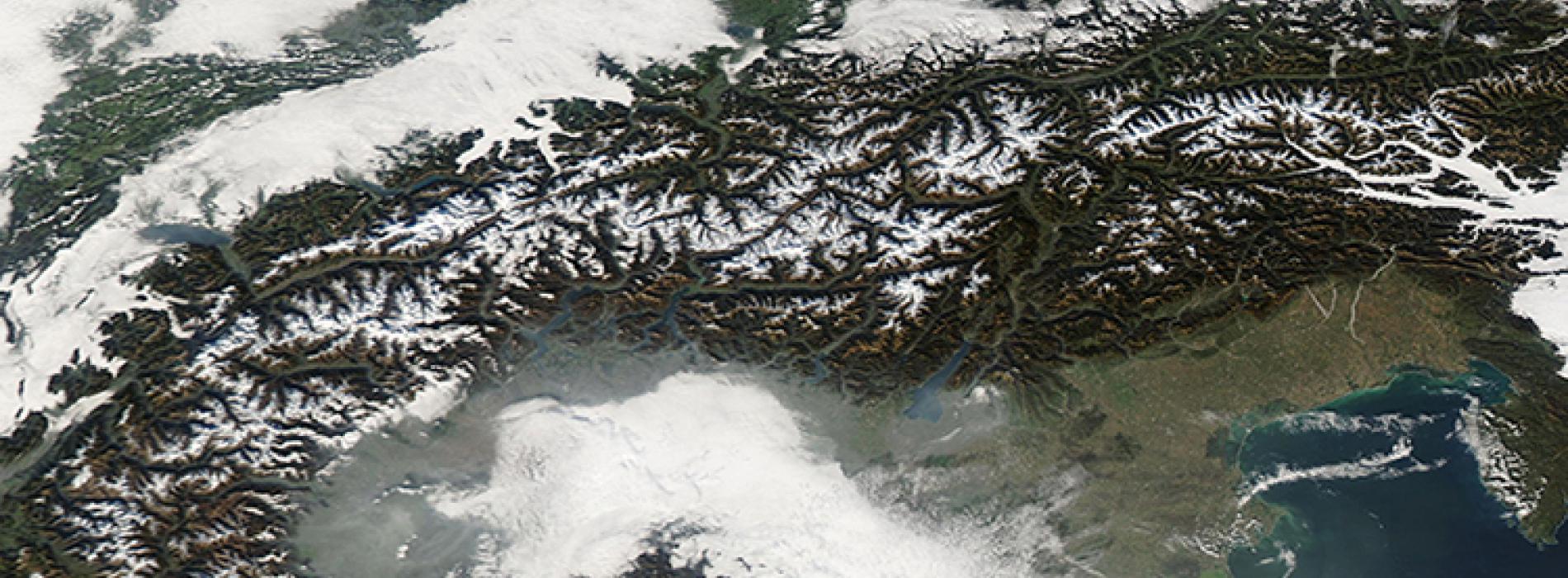
 News
News
COVID-19: Air quality influences the pandemic
From October to March, large parts of the Swiss Plateau and the Po-Plain may be covered by fog or haze. Such thermal inversions act like a cap and are trapping fine particulate matter that increases to excessive values below the inversion layer. This can aggravate the consequences of COVID-19. © NASA-OB-DAAC, AQUA - MODIS-Satellite
Temperature inversions or Saharan dust intrusions can favor the presence of fine particles in the air. Their high concentration can aggravate the consequences of COVID-19.
The correlation between the high concentration of fine particles and the severity of influenza waves is well known to epidemiologists. An interdisciplinary team from the University of Geneva (UNIGE) and the ETH Zürich spin-off Meteodat investigated possible interactions between acutely elevated levels of fine particulate matter and the virulence of the coronavirus disease. Their results, published in the journal Earth Systems and Environment, suggest that high concentrations of particles less than 2.5 micrometers in size may modulate, or even amplify, the waves of SARS-CoV-2 contamination and explain in part the particular profile of the COVID-19 pandemic. The increase in fine particles is generally favored by air temperature inversions, characterized by fog situations, or by Saharan dust intrusions. The study provides preventive measures related to air pollution to limit future outbreaks of morbidity and mortality due to the coronavirus.
Keep reading the press release here.